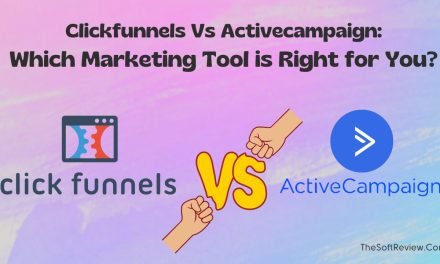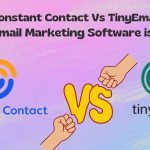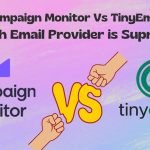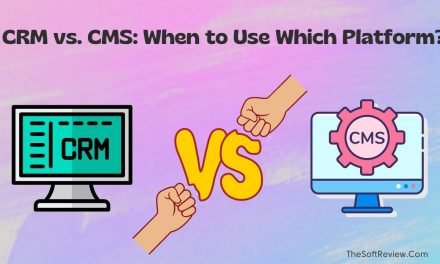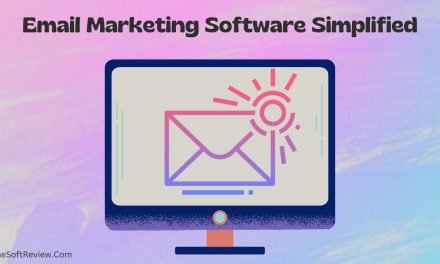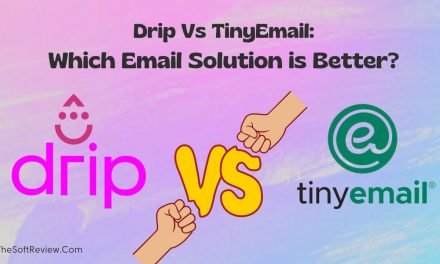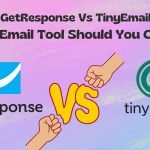
ActiveCampaign Vs TinyEmail: Which Email Solution is Better?
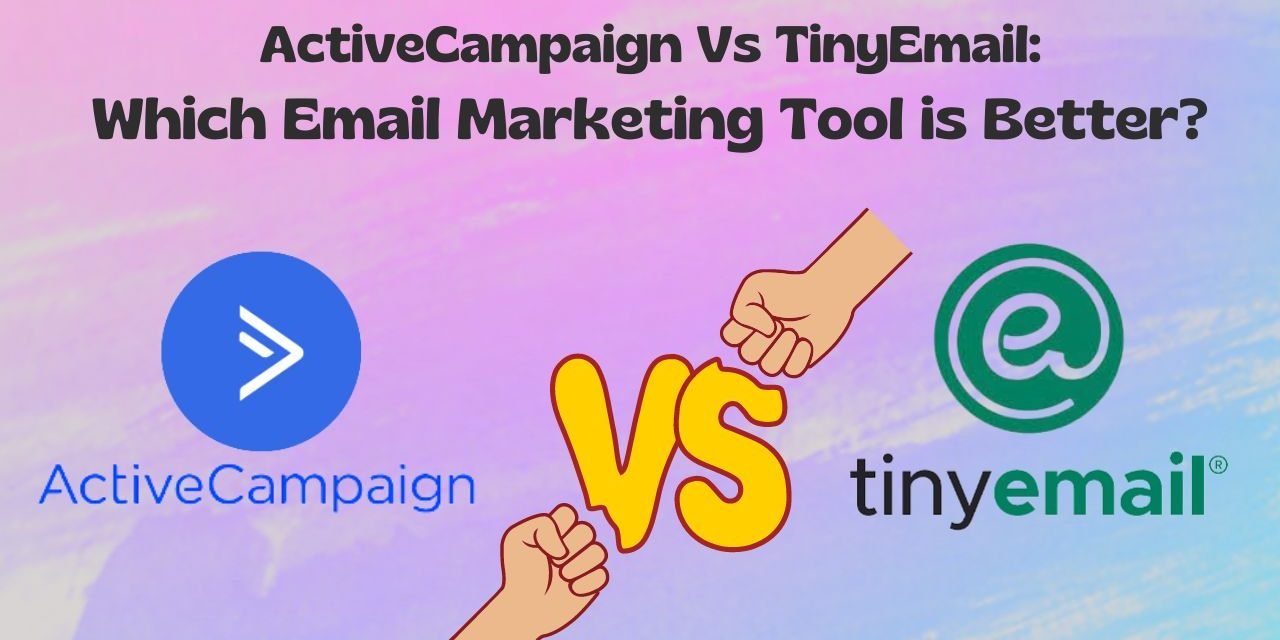
With an average ROI of 3600-4200%, Email marketing remains a powerful tool for businesses to engage with their audience and drive conversions. However, such a high ROI can only be achieved if we follow an optimum email marketing strategy and choose the right tool.
The problem starts when all email service providers claim they are the best, and the chance of choosing the wrong platform increases.
Two such choices are ActiveCampaign and TinyEmail, which have gained tremendous traction. And if you are hesitant to choose between the two platforms, you are in the right place.
In this ActiveCampaign vs TinyEmail comparison, we will dissect the features and performance of these two email marketing platforms so that you can choose the best tool within your budget.
Key Analysis: ActiveCampaign Vs TinyEmail
ActiveCampaign offers advanced automation and extensive integrations, ideal for larger businesses. TinyEmail provides affordability and simplicity, perfect for small businesses. You will need to make the decision based on your specific email marketing needs and budget. Let’s explore deep.
Key Takeaways of This ActiveCampaign Vs TinyEmail Comparison
- ActiveCampaign offers more robust automation features, including advanced drip campaigns, predictive sending, and 850+ pre-built workflow recipes, which TinyEmail currently does not provide.
- TinyEmail offers a free account, which you can not imagine with ActiveCampaign, and ActiveCampaign’s premium plans are more expensive than TinyEmail.
Round 1: An Overview of ActiveCampaign and TinyEmail
A. What is ActiveCampaign?
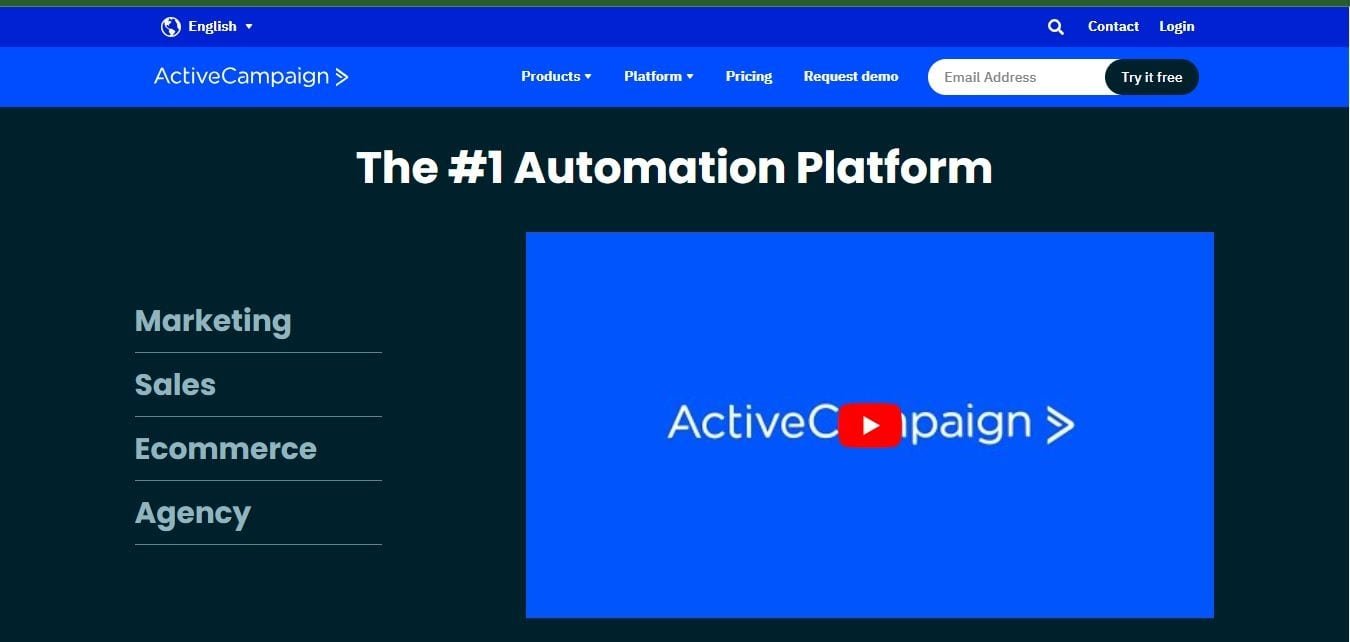
ActiveCampaign is a leading email marketing automation platform founded in 2003 by Jason VandeBoom that has revolutionized the traditional customer engagement approach through its robust automation capabilities.
The platform started its journey by providing essential email marketing tools, and over time, it added tons of advanced features like SMS marketing, transactional emails, a brand-new CRM system, and much more.
With over 150,000 customers, ActiveCampaign has established itself as a go-to solution for email marketers seeking to elevate their engagement strategies.
B. What is TinyEmail?
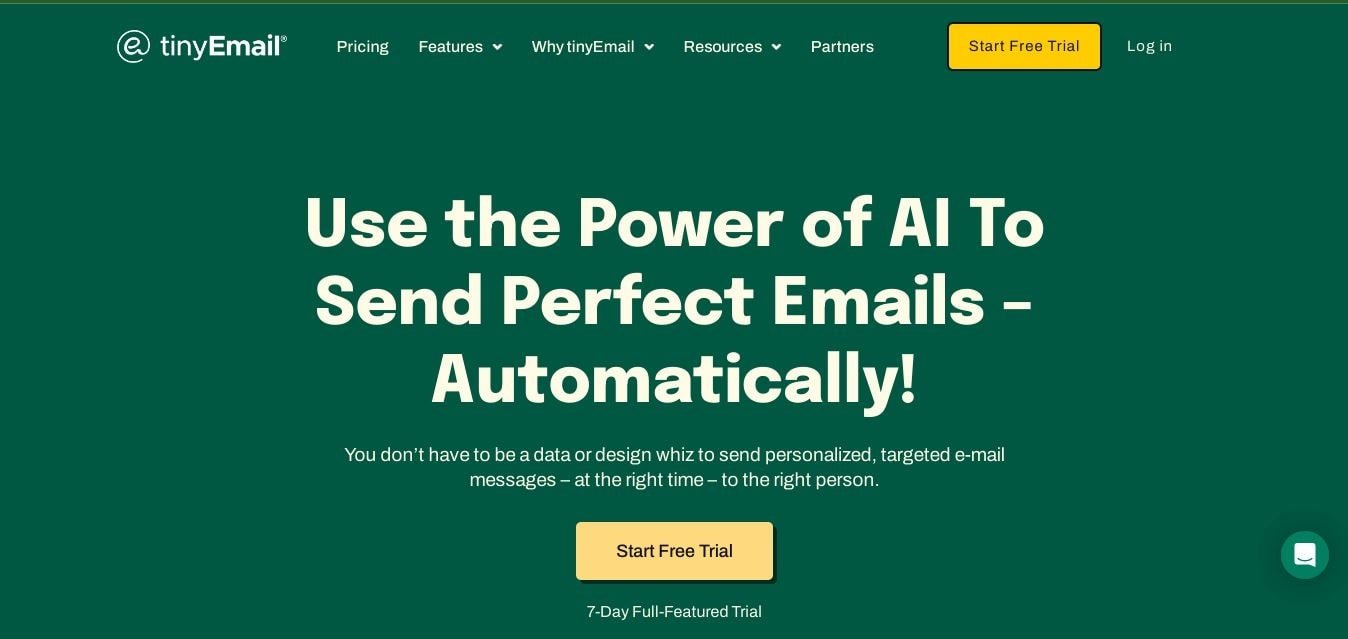
TinyEmail is a comparatively new email marketing platform founded by Seamas Egan, who has ten years of experience in IT. The platform is still growing, so we do not have data about its user base.
However, note that the platform is getting tremendous responses from email marketers for its simplicity and reasonable pricing.
Round 2: Head-to-Head Feature Comparison: ActiveCampaign Vs TinyEmail
The following aspects (A-J) are crucial components of modern email marketing software. We will measure both ActiveCampaign and TinyEmail’s performance based on the criteria:
A. Lead Generation
Lead generation refers to the marketing efforts of capturing customer data, typically through website forms and landing pages. Let’s see how ActiveCampaign and TinyEmail perform in this criteria:
A1. Sign Up Form Builder:
Both ActiveCampaign and TinyEmail offer pre-built templates for Embedded, Popup, and Floating forms with a drag-and-drop editor. You can add standard and custom fields on both. Both perform pretty similarly.
A2. Landing Page Builder:
ActiveCampaign offers a built-in landing page builder with plenty of pre-built templates. It also allows you to add a custom domain to your landing page.
However, TinyMail is still working on launching the Landing page feature.
A3. Sign Up Form Builder:
ActiveCampaign offers a robust Lead Scroding tool so that you can qualify your leads efficiently, which is currently unavailable in TinyEmail.
B. Contact List Segmentation
The segmentation feature of a modern email marketing platform offers you to divide your contacts into different groups based on their behavior, demographic, and interests so that you can send personalized emails to each group. Let’s see how our contenders perform on this criteria:
B1. Groups, Tags, and Custom Fields:
Both ActiveCampaign and TinyEmail allow you to group your subscribers based on their demography, time zone, interaction history, and any other rule you want to set.
You can also use built-in tags to sort your groups for better visualization—quite similar segmentation performance.
C. Email Design
Email designing involves creating visually appealing and effective email templates or layouts for email marketing campaigns. It combines various design elements, such as graphics, images, colors, typography, and more. Let’s check how our contenders perform:
C1. Pre-Built Templates:
Both ActiveCampaign and TinyEmail offer pre-build templates. However, TinyEmail offers more templates (550+ AMP Templets) in their gallery, and TinyEmail’s templates are AMP powered, so they are a bit more responsive than ActiveCampaign’s. ActiveCampaign has around 250+ pre-built templates.
C2. Drag-and-Drop Builder:
Both offer an easy-to-use drag-and-drop email builder that you can use to edit a template’s text, color, and media files or create a new design from scratch. Pretty similar performance.
C3. Brand Kit:
At TinyEmail, you can utilize the Brad Kit feature to establish a set of design options and assets that reflect your company’s unique personality and visual identity.
On ActiveCampaign, you do not get such a feature directly, but you can save a template you designed and reuse it repeatedly.
C4. Dynamic Content:
Both ActiveCampaign and TinyEmail tools allow you to send dynamic emails.
D. Automation and AI
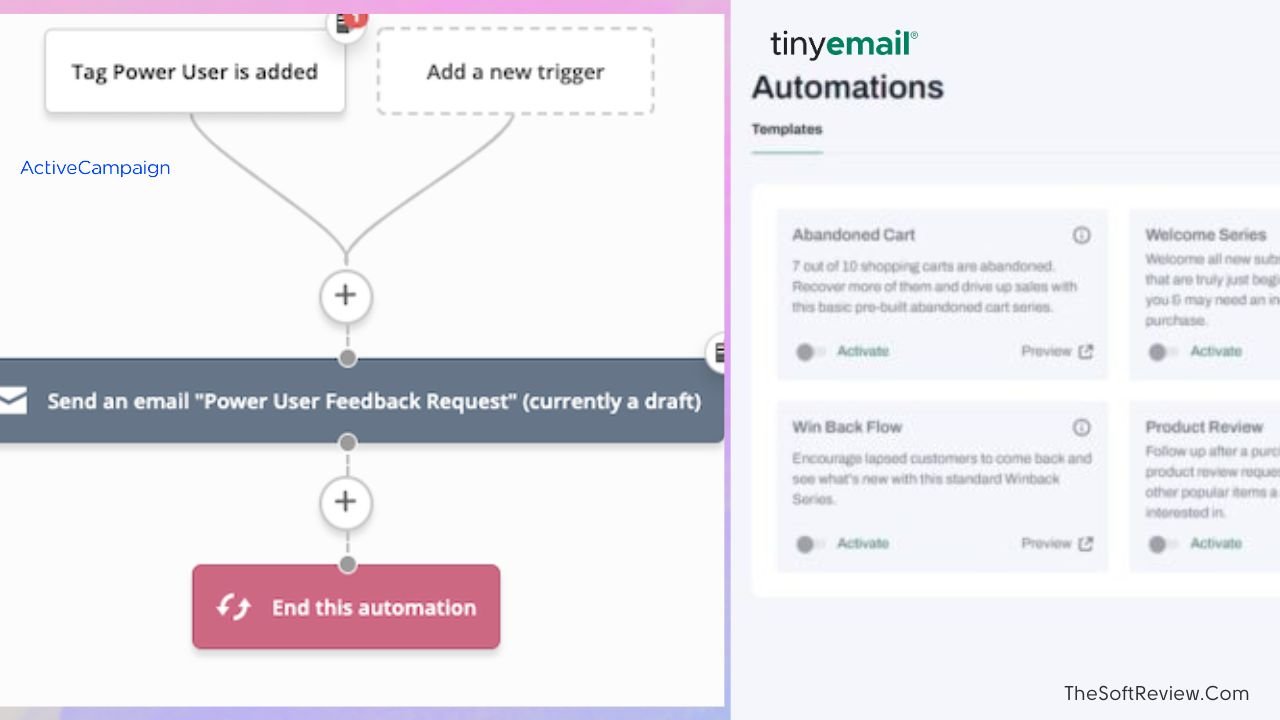
Automation and artificial intelligence is the most crucial aspect of modern email marketing tools that streamline various aspects of your marketing effort, such as marketing automation, writing email copy, and more. Let’s weigh how both tools perform:
D1. Email Automation:
Both tools offer abandon cart and welcome email automation.
But ActiveCampaign offers more powerful email automation features like drip automation, predictive sending, conditional sending, and more, which TinyEmail does not provide.
D2. Automation Workflow Recipes:
ActiveCampaign offers a visual automation builder with 850+ built-in workflow automation recipes, which you can customize if you need.
However, TinyEmail does not offer workflow recipes yet.
D3. AI Writing Assistant:
TinyEmail’s AI assistant only offers basic subject line generation, but ActiveCampaign offers a full AI copywriter, which you can use to write your email copy.
E. Analytics and Reporting
Analytics and reporting involve tracking and analyzing key metrics and data related to your email marketing campaigns, such as open rates, click-through rates, conversion rates, subscriber growth, and more. Here is a detailed comparison of how each tool performs:
E1. Analytics Dashboard:
Both email marketing platforms offer a dedicated dashboard to see your campaign’s performance, such as open rate, click-through rate, bounce rate, and other vital metrics, using interactive charts and graphs. You can export your reports via CSV and Excel files.
E2. Site, Link, and Event Tracking:
ActiveCampaign offers advanced tracking tools so that you can track your audience’s interaction and get powerful insights. However, TinyEmail lacks this feature.
E3. A/B Testing:
ActiveCampaign offers a powerful A/B testing feature to compare two campaigns and determine which performs better.
However, TinyEmail is on the way to launching the A/B testing tool.
F. Deliverability Rate
A high deliverability rate refers to the ability of your emails to reach the recipients’ inboxes successfully rather than being flagged as spam or bouncing. Here is the performance:
F1. Deliverability Score:
According to the Email Tool Tester, ActiveCampaign has a deliverability rate of 91.7%.
But, there is no reliable data that shows TinyEmail’s deliverability rate.
However, TinyEmail claims it has an AI engine that ensures an automated IP Warmup process to ensure high deliverability.
G. Integrations and Functionalities
Integrations allow you to connect your email marketing platform with other software services that you use in your business process. Let’s check how each tool performs:
G1. Native Integrations:
ActiveCampaign offers more native integrations (920+ integrations), additionally 5000+ more integration with Zapier, which gives you flexibility to choose the right integration for your purpose.
Whereas you will have to connect with Zapier to get popular integrations with TinyEmail.
G2. API Integrations:
Both ActiveCampaign and TinyEmail offer a reliable API, which you can use to build a custom integration.
H. Ease of use
An email marketing tool should have a user-friendly interface and intuitive features, making it easy for users to navigate and execute their email marketing tasks efficiently.
I. Customer Support and Knowledge Base
Reliable customer support is crucial when using an email marketing tool. It ensures prompt assistance and guidance whenever you encounter issues or have questions about the tool’s features and functionalities.
I1. Email, Phone, and Live Chat Support:
Both ActiveCampaign and TinyEmail provide good customer support. You can reach them anytime via Email, Phone, or Live Chat Support.
I2. Helpful Video Tutorials and Blog Posts:
Both have adequate resources to help you get started with their tool.
However, ActiveCampaign offers Live Expert Workshops and 1:1 Strategy Sessions to help you succeed with your marketing journey. It also has a more extensive community where you can learn new ways to use the tool.
J. Pricing Plans
End of the day, pricing is a significant factor in decision-making. Here are the pricing plans:
J1. Free Plan:
ActiveCampaign does not offer you a free plan. On the other hand, TinyEmail has a free plan which provides the ability to its customers to explore its features and benefits before they move to the paid program.
With TinyEmail’s free account, you can add up to 500 subscribers and send automated emails using an AI writing subject line generator and additional features.
J1. Paid Plans:
With ActiveCampaign, you do not get all the advanced features with its Plus plan. You must purchase the “Professional” plan to access all the advanced features. For instance, the Landing page functionality is unavailable in the “Plus” plan.
On the other hand, TinyEmail sets its pricing based on the number of emails you want to send form your account. Some features might not be available for you if you choose their Standard plan. So we suggest to have Pro plan if you want their full functionality.
Round 3: Summing the Advantages and Disadvantages
A. Advantages of ActiveCampaign
- ActiveCampaign offers advanced email automation features, such as drip campaign automation, conditional content, predictive sending, and 850+ pre-built workflows.
- It offers advanced tracking and reporting tools, such as site tracking, link & event tracking, store performance, and more.
- You will get tons of native integrations with ActiveCampaign.
- A full-fledged AI content generator is available.
- The deliverability rate is relatively high, 91.7%.
B. Disadvantages of ActiveCampaign
- No free plan is available; it only offers a 14-day free trial.
- You may need additional time to learn and utilize its advanced features.
C. Advantages of TinyEmail
- TinyEmail offers 550+ beautiful and super-fast AMP email templates.
- Easy to operate; designing forms and emails is easy.
- Per-subscriber analytics is available to track each subscriber’s activities.
- The price is comparatively lower than its competitors; a free plan is available.
- Offers powerful abandon cart email automation for e-commerce stores.
D. Disadvantages of TinyEmail
- Lacks automation features, such as drip campaigns, predictive sending, and workflow templates.
- Advanced site tracking and a full-fledged AI writer are yet to come.
Round 4: Final Thoughts: Which Tool is Right for Your Marketing Campaigns?
During our research, we discovered that both tools have a significant percentage of positive ratings and could be game-changing for specific use cases. And no matter what platform you choose, ensure you know the email marketing features your business requires. It will help you choose the right platform within your budget.
1. Who Should Select ActiveCampaign?
If you seek advanced email marketing automation capabilities, including drip campaigns, automated recipes, and more advanced tracking and reporting features with a full-fledged AI content generation tool, ActiveCampaign is recommended.
Its advanced reporting, automation, and integration capabilities make it an ideal choice for large businesses that need a ready-to-scale platform and have their budget.
One of the key specialties of ActiveCampaign is they have plenty of resources available to help you learn all their extensive features to utilize them effectively.
2. Who Should Select TinyEmail?
If your email marketing needs are relatively straightforward and you don’t require complex automation or extensive analytical tools, TinyEmail can be a cost-effective option. Its affordable pricing, ease of use, and decent automation capabilities make it an excellent choice for small businesses.
And the biggest reason for choosing TinyEmail is that the platform is working on launching the currently unavailable features, such as drip campaign automation, automation workflows, a full-fledged AI copywriting tool, and others.
It can be a good fit for email marketers who want a tool that will evolve as a powerful email marketing hub as their business and skills grow.





